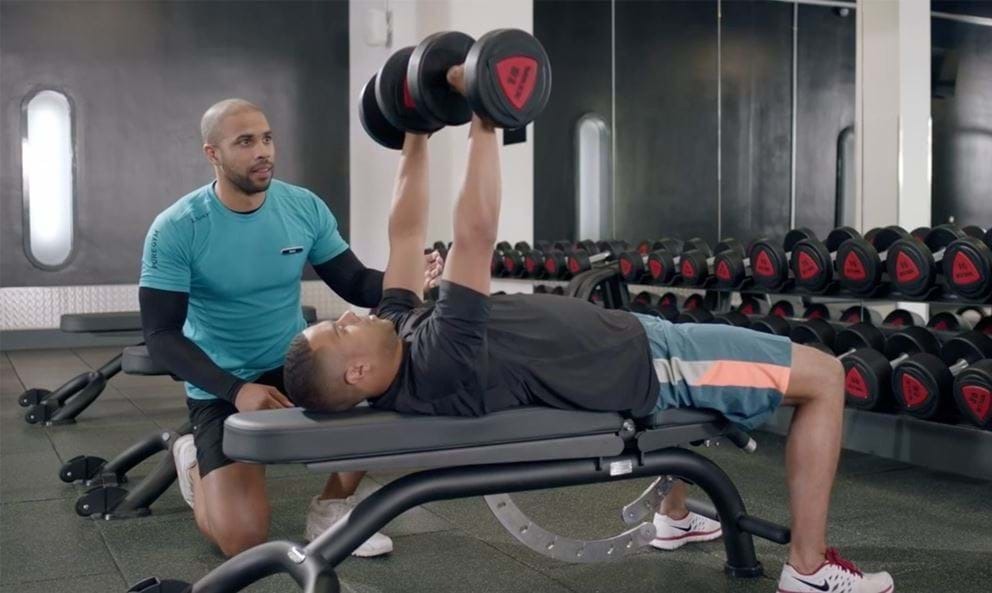Starting a new fitness journey is one of the best things you can do for your health. You’re full of motivation, excited about the changes you’re going to make, and ready to hit the gym. But just like any new journey, the path is full of things to learn. And for a beginner, it’s easy to make a few common mistakes that can slow down your progress or even lead to an injury.
The key to a successful fitness journey is not about being perfect. The key is about learning. This guide will be your roadmap to avoiding the most common mistakes that beginners make. We’ll show you exactly why they happen, what the problem is, and a simple solution for each one. Think of this not as a list of things you might do wrong, but as a set of lessons that will help you to build a stronger, healthier, and more confident you.
The Beginner’s Mindset: Why Mistakes Are a Natural Part of the Process
Making mistakes is a normal and a natural part of any new journey. A person who is a beginner at the gym is a person who is learning a new skill. They are learning a new way to move their body, a new way to eat, and a new way to live. And with any new skill, there will be a few bumps in the road.
The goal is not to never make a mistake. The goal is to learn from them. The mistakes we will talk about are a great way to learn a lot about your body, about your workouts, and about what works for you. By avoiding these common mistakes, you can get a better and a much safer workout.
The Top 10 Common Beginner Workout Mistakes
Here is a guide to the most common mistakes that beginners make and how to fix them.
Mistake 1: Skipping the Warm-up
The first mistake that a lot of beginners make is skipping a warm-up. They walk into the gym and they go straight to the heaviest weight they can lift. This is a huge mistake. A warm-up is a way to get your body ready for the work ahead. It helps to increase your heart rate, to get more blood to your muscles, and to get your joints moving. A warm-up can also help to prevent injuries.
- The Problem: A cold body is more likely to get an injury. Your muscles, your joints, and your ligaments are not ready for a heavy workout.
- The Solution: You should aim for 5-10 minutes of light cardio (like a brisk walk on a treadmill or jumping jacks) and some dynamic stretches (like arm circles and leg swings). This simple routine will get your body ready for your workout and will help to prevent injuries.
Mistake 2: Bad Form and Heavy Weights
The second mistake that a lot of beginners make is lifting a weight that is too heavy for them. They see other people in the gym lifting heavy weights, and they want to do the same. But lifting a heavy weight with bad form is a huge mistake. Bad form can lead to injuries that can stop your progress for weeks or even months.
- The Problem: When you lift a heavy weight with bad form, you are not using the right muscles. You are using a lot of other muscles to help you, which can lead to an injury. You are also not giving the muscle you want to work a good challenge.
- The Solution: You should start with a very light weight that you can lift easily. Your main goal is not to lift the heaviest weight. Your main goal is to learn the correct form for each exercise. You should watch a video or ask a trainer at your gym to show you the correct form. Once you have the form down, you can slowly increase the weight.
Mistake 3: Not Having a Plan
The third mistake that a lot of beginners make is not having a plan. They walk into the gym and they just do a few random exercises that they have seen others do. A workout that you do randomly is not a good workout. A good workout requires a plan.
- The Problem: A workout without a plan is a workout without a direction. You don’t know what you are doing, you don’t know why you are doing it, and you don’t know what you are trying to achieve. This can lead to a lot of frustration and a lack of progress.
- The Solution: You should have a workout plan that tells you exactly what to do, what exercises to do, how many sets to do, and how many reps to do. A simple full body workout routine for three days a week is a great way to start.
Mistake 4: Not Eating Right
The fourth mistake that a lot of beginners make is not eating right. Your body needs fuel to build muscle and to recover. A workout plan is only half of the story. The other half is what you do in the kitchen.
- The Problem: A person who works out hard and does not eat right will not get the results they want. Your body needs protein to repair your muscles and carbohydrates for energy.
- The Solution: You should focus on eating a healthy and balanced diet with a lot of protein from sources like chicken, fish, eggs, and beans. Protein is the building block of your muscles. You should also eat a lot of carbohydrates from sources like rice, potatoes, and whole grains.
Mistake 5: Not Getting Enough Rest
The fifth mistake that a lot of beginners make is not getting enough rest. Your muscles don’t grow in the gym; they grow when you are resting. A person who is trying to build muscle needs a lot of rest.
- The Problem: A person who works out every day without a rest day will not get the results they want. You can overtrain your muscles, which can lead to injuries and a lack of progress.
- The Solution: You should get at least 7-9 hours of sleep every night. Sleep is a time for your body to repair itself and to grow stronger. You should also take a rest day from the gym to let your body recover.
Mistake 6: Doing the Same Routine
The sixth mistake that a lot of beginners make is doing the same routine over and over again. Your body gets used to a routine. To build muscle and to get stronger, you have to constantly challenge your body.
- The Problem: A workout that is the same every time will not challenge your muscles. You will not get stronger, and you will not build muscle.
- The Solution: You should change your workout routine every 4-6 weeks. You can change the exercises, the number of sets, or the number of reps. This is called progressive overload, and it is the key to muscle growth.
Mistake 7: The “All or Nothing” Mindset
The seventh mistake that a lot of beginners make is the “all or nothing” mindset. It’s the feeling that if you can’t have a perfect workout, you shouldn’t have one at all. This is a huge mistake. A bad workout is still better than no workout.
- The Problem: A person who has an “all or nothing” mindset will often quit their workout plan when life gets in the way.
- The Solution: You should understand that a short workout is still a great workout. A workout that you do for 10 minutes is still a win. It is a way of showing up for yourself, and it is a way of building the habit.
Mistake 8: Forgetting to Cool Down
The eighth mistake that a lot of beginners make is forgetting to cool down. A cool-down is a way to get your body back to a normal state after a workout. It helps to reduce muscle soreness and to speed up healing.
- The Problem: A person who does not cool down will often feel more muscle soreness the next day.
- The Solution: A simple cool-down should include 5-10 minutes of light cardio and some static stretches (holding a stretch for 30 seconds). This simple routine will help your body to recover faster and to feel great the next day.
Mistake 9: Not Tracking Progress
The ninth mistake that a lot of beginners make is not tracking their progress. They don’t know how much weight they lifted last time, or how many reps they did.
- The Problem: If you don’t track your progress, you can’t see how much you are improving. This can be a huge source of demotivation.
- The Solution: You should use a notebook or an app on your phone to track your progress. You can write down the exercises you did, the weight you lifted, and the number of reps you did. This will help you to see how much you are improving and to stay motivated.
Mistake 10: Not Listening to Your Body
The tenth mistake that a lot of beginners make is not listening to their body. There is a difference between a good muscle burn and pain. If you feel any sharp pain during an exercise, you should stop. It is a sign that something is wrong.
- The Problem: A person who does not listen to their body is a person who is more likely to get an injury.
- The Solution: You should always listen to your body. You should rest when you are tired, and you should not push through pain.
The Lasting Habit
The journey to a stronger, healthier you is a long one. It’s not a sprint; it’s a marathon. The real secret to success is not a perfect plan or a magic pill. It is consistency. By building a routine that is a great fit for your life, you are building the strongest root of a lasting fitness journey. So, start today, plan your week, find your “why,” and show up for yourself.



